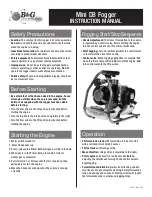
OFF
10V
100V
BATTERY
TEST
CONTINUITY
TEST
TEST
READ MANUAL BEFORE USE
OHMS
SURFACE
TEST
TAUT BAND
SUSPENSION
10
9
1G
10G
FAIL
PASS
10
10
10
11
100G
10
8
10
7
10
6
10
5
0
1M
100K
0
10M
100M
CONTINUITY
BATTERY
100V
0
10K
100K
1M
10M
100M
Figure 5-1: Periodic Performance Tests of Installed Surfaces
OFF
10V
100V
BATTERY
TEST
CONTINUITY
TEST
TEST
READ MANUAL BEFORE USE
OHMS
SURFACE
TEST
TAUT BAND
SUSPENSION
10
9
1G
10G
FAIL
PASS
10
10
10
11
100G
10
8
10
7
10
6
10
5
0
1M
100K
0
10M
100M
CONTINUITY
BATTERY
100V
0
10K
100K
1M
10M
100M
Figure 5-2: Qualification Tests of Installed Surfaces
3
STATIC CONTROL SURFACE
GROUNDABLE POINTS
TO TEST WEIGHT AT TEST
POINT A, B, C, D & E
TO TEST WEIGHT AT TEST
POINT A, B, C, D & E
2”
2”
STATIC CONTROL SURFACE
GROUNDABLE POINTS
drain a static charge in a reasonable time. This test
involves measurement of the total resistance from the
static control surface through the conductor or ground
cord to the ESD GROUND (ESDG), verifying that the
entire static control system is functioning correctly.
NOTE: ESD-S4. 1 suggests that a static control surface that
measures in the range of 1x10
6
ohms to 1x10
10
ohms RTS-
ESDG is acceptable. HOWEVER, 3M RECOMMENDS THAT A
MORE CONSERVATIVE VALUE OF 1X10
9
OHMS BE USED AS
THE HIGHEST ACCEPTABLE RESISTANCE TO ESD GROUND.
The following procedures should be followed when
testing installed static control surfaces.
A. Complete BATTERY TEST and CONTINUITY TEST.
B. Set the Instrument on a table top or other stable surface
and place a test weight at the desired test point as shown
in Figure 5-1. Connect the test leads to the meter using
the right angle banana plugs at the meter. Then connect
one of the test leads to the test weight and the other to
the ESD GROUND using one of the supplied clips.
C. Test the static control surface using the 100 volts
SURFACE TEST. Depress the TEST button for 15
seconds, allowing the pointer to stabilize; record the
readings for each test point. If the reading is below 1x10
6
ohms, check the static control surface for an alternate
path to ground; correct and retest. If some or all the
readings are above 1x10
9
ohms, the static control surface
may be dirty. Clean the surface using the manufacturer’s
recommended cleaning procedure followed by two
clear water rinses and a rinse with 70% Isopropyl
alcohol. Allow the surface to dry overnight and retest.
If the resistance reading is “infinite,” there is an
interruption (open) in the ground connection; repair
and retest.
2. QUALIFICATION OF INSTALLED STATIC
CONTROL SURFACES
[Measurement of resistance of the top surface to the
groundable point of the static control surface (R
TS-GP
)].
GROUNDABLE POINT is the point at which the
grounding conductor is connected to the static control
surface; the GROUNDABLE POINT is most commonly
a snap (mats), a bolt (laminate), or a strip of conductive
foil tape (flooring). This QUALIFICATION
measurement is similar to those described in the test
description section and is used to verify the correct
installation of the GROUNDABLE POINT by the
manufacturer or by the user. While the test procedure is
the same, the test setup is slightly different; see Figure 5-2.
3. EVALUATION OF STATIC CONTROL
MATERIALS
[Measurement of the resistance between two points on
top of a static control surface (R
TS-TS
), and the resistance
between a point on the surface and the groundable point
(R
TS-GP
)]: Material measurements are done to determine
the intrinsic electrical properties of static control work
surface materials.
NOTE: Values obtained by these tests may not reflect how a
material will perform when installed as a static control surface.
Material evaluations are typically done at two humidities
(12% RH and 50% RH) to determine whether the
electrical properties of the material are humidity-
dependent. If the low humidity test results are borderline
or not within the expected ranges, caution should be
exercised when using such materials in winter months or
in dry conditions. To assure test accuracy, a minimum of
six samples should be tested. The test procedure is as
follows:
A. Prepare a minimum of six samples of each material
to be tested as shown in Figure 5-3.
B. Clean samples to be tested with a 70% Isopropyl alcohol
solution and condition at 73°F (23°C) and 50% RH for
48-72 hours.
NOTE: Samples must be maintained at the appropriate humidity
level throughout the test procedures.
C. Complete BATTERY TEST and CONTINUITY TEST


























